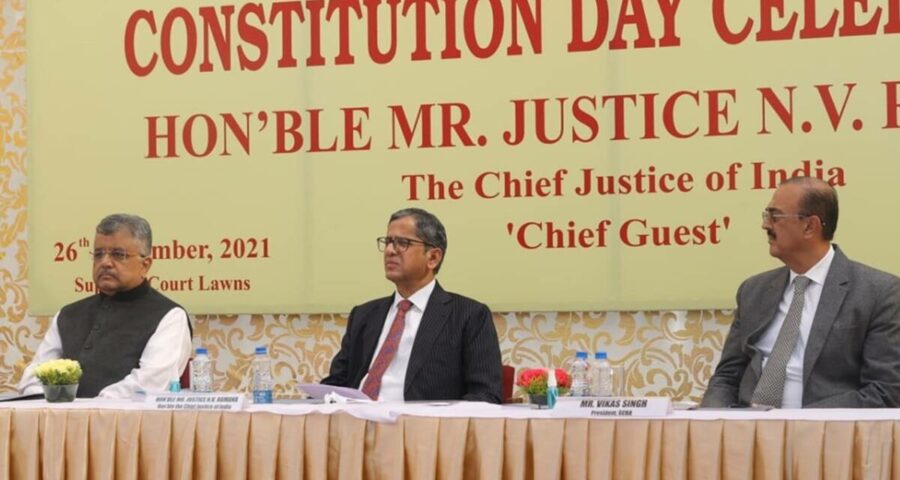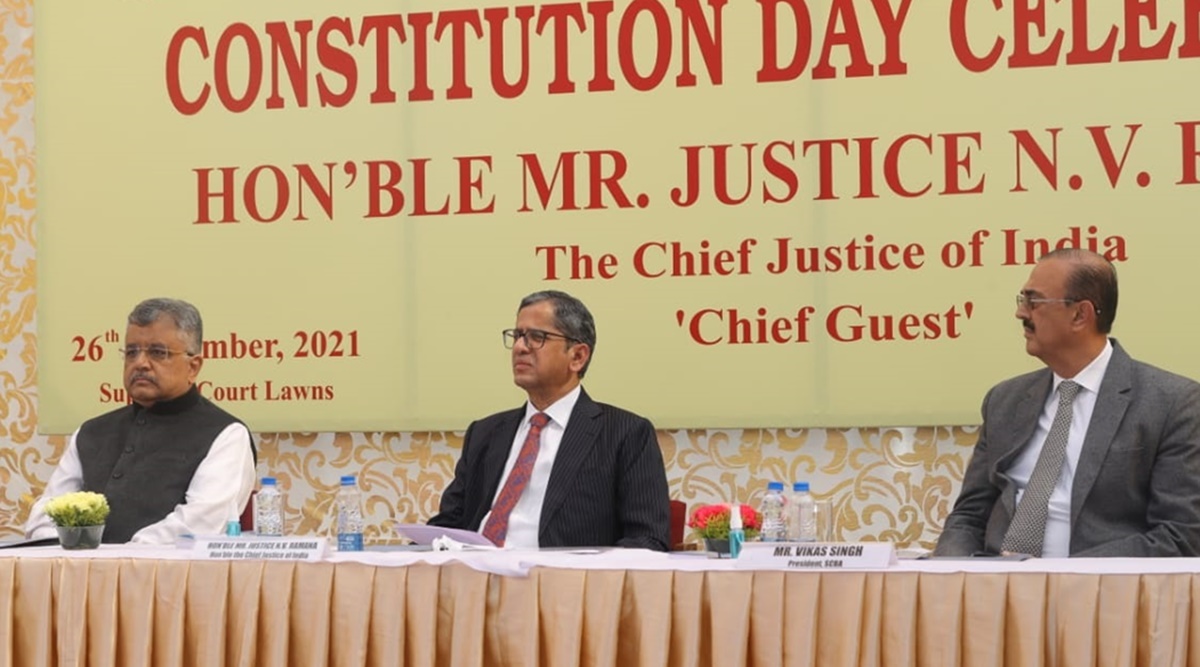🔴 G. N. Devy writes: Tribal communities, workers, peasants, students and the common people braved imprisonment or bullets and fought for the dream of a freedom that would ensure justice and equality
In 1922, a 30-year-old English poet published a long poem, a modern-day epic by common consent. A century later, T S Eliot’s The Waste Land resonates in India, not because of its prophecy or satire, but because of a curious tale it picked up from the Brihad Aranyaka. The Aranyaka, the earliest among the Upanishads, is a treasure trove of mythical stories, one of which appears in the fifth section of The Waste Land, titled ‘What the Thunder Said.’
This is how it goes: After Prajapati, the creator, had made beings and things, he danced in a frenzy, shouting, “da, da, da…” He then assembled his progeny — the devas, danavas and manavas — and asked if they had understood what he said. The devas said “da” is damyata: “learn self-control”; the manavas thought, he had said datta: “learn to overcome greed”; the danavas said it was dayadhvam: “learn to forgive”. Prajapati laughed enigmatically and said, “Well, you seem to have understood, perhaps.”
Without forgetting that this is a myth and not history, I have often wondered if there has been a moment in India’s history when the praja danced in ecstasy, as did Prajapati, for having created what had to be created. I like to believe that November 26, 1949, was that moment – we, the people, adopted, enacted and gave unto ourselves the Constitution, which gave to every Indian a hope that no past era had provided. What diverse responses does it evoke now?
Remembering the day, the constitutional head of India’s judiciary said that the “citizenry of independent India” has breathed life into “what might otherwise have been just another bare document”. Many freedom fighters, such as Gandhi, Ambedkar, Nehru, Lajpat Rai, Patel and Alladi Krishnaswamy Iyer, he reminded the nation, were lawyers. His appreciation of “litigants, judges, law-makers and lawyers” reminded the country that it is the people who matter above all. The response to Samvidhan Divas by the principal opposition party was to remind the Prime Minister that the institutions envisioned by the Constitution have been rendered dysfunctional during his regime and “the Constitution was being undermined every day”. The thoughts of the Prime Minister on the day revolved round his pet theme of dynastic politics as a threat to democracy, colonial mindset and “misuse of the freedom enshrined in the Constitution” as a hindrance in the country’s development. His irritation towards those he believes to be hindering development was clear in word and tone.
All three paid homage to those who gave up their lives to make India free. Influenced by visuals in films, emotive theatre, stories heard from elders and distorted snippets coming through social media, the nation’s memory of the freedom struggle is quite truncated. Who remembers today, for instance, the names of the thousands who plunged into the Quit India and Civil Disobedience movements, faced the gallows, were shot by the colonial police or rotted in jails? Who remembers that tribe and caste fought British rule in villages and cities, from the Santhal uprising in the 1850s right till independence in 1947?
One of those many struggles for India’s freedom was the Battle of Aberdeen, a violent clash between the native Adivasi population of the Andaman islands and the British and the convicts deported to the Penal Colony in the Andaman islands after 1857. Anthropologist Vishvajit Pandya tells us that in April 1859, a batch of Indian prisoners had escaped the Penal Settlement and wanted to hide in the habitat of the Adivasis. All but one of the convicts were killed, as they had been clearing the forest for creating British settlements. A month later, in May 1859, the Adivasis decided to attack the British establishment; but Dudhnath Tiwari, convict no. 276, who they had not killed, betrayed them and reported the plot to the British. As a result, 1,500 tribal men faced the bullets fired from the navy schooner Charlotte. Why had the convicts attempted an escape? In the previous year, in a single day, on May 18, 1958, scores of prisoners had been hanged, 26 of them deported from the Bombay Presidency alone and most in their early twenties. One finds in the record of martyrs documented by the ICHR that from among those who were deported to the Andamans from the erstwhile Bombay Presidency, a total of 37 were hanged. They belonged to all castes and religions. Of them, 14 were Muslims.

Returning to the Aranyaka myth, one agrees with the CJI that the people have kept the Constitution alive, despite the “clean chits” to architects of riots and FIRs against victims of atrocities. One agrees with opposition parties that democratic institutions have crumbled; outside as well inside the political parties. Yes, the Prime Minister was right in pointing to “family-centric” action as a hindrance to development. Indeed, catering to only a few corporate families has caused a grave economic crisis for the rest of India.
One wonders if, like the mythical Prajapati, the praja could laugh, for it knows that “once the Constitution” is no guarantee of “always the Constitution”. Surely, it is watching through millions of eyes.
This column first appeared in the print edition on December 3, 2021 under the title ‘For the praja, by the praja’. The writer is a cultural activist
Source: Read Full Article


